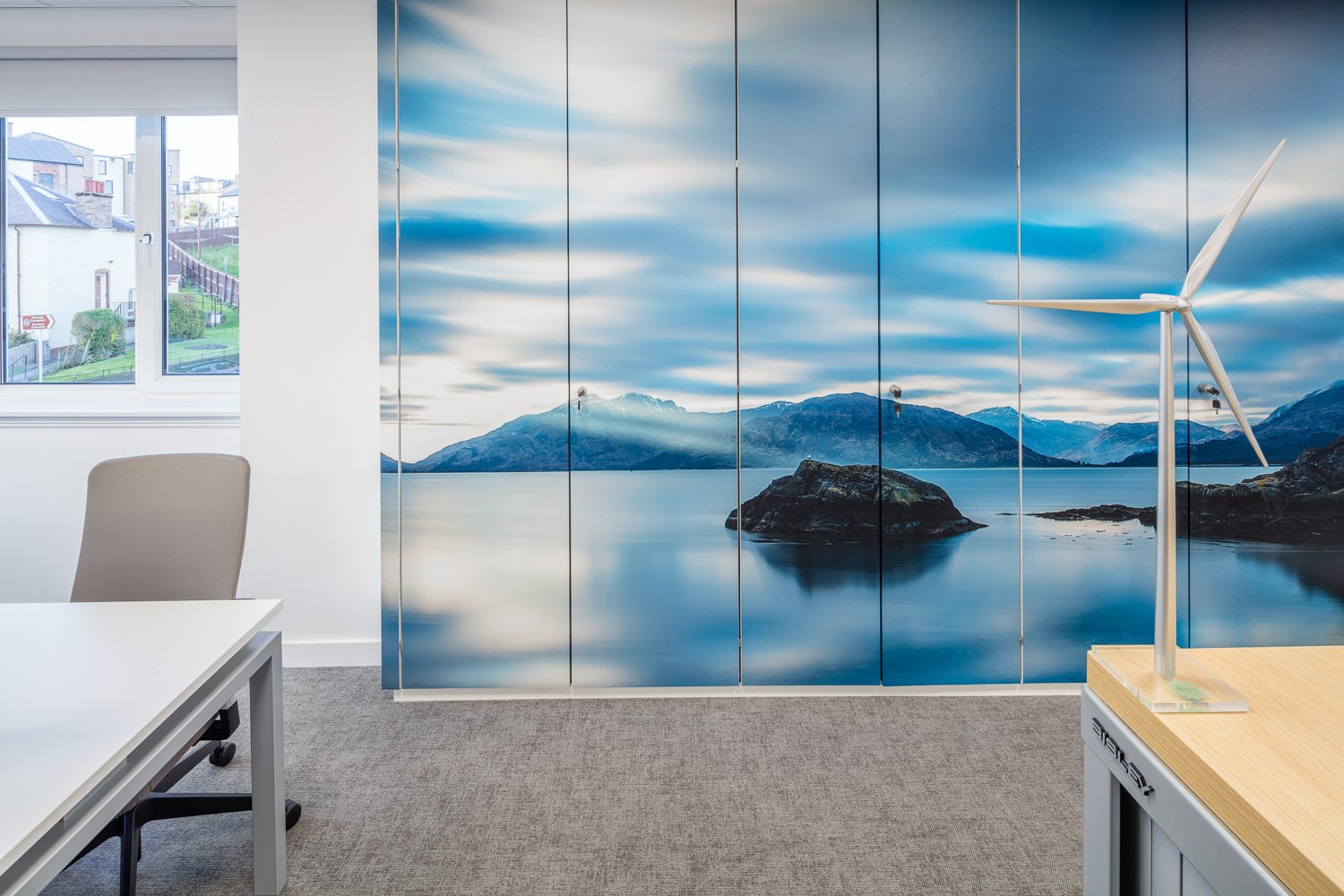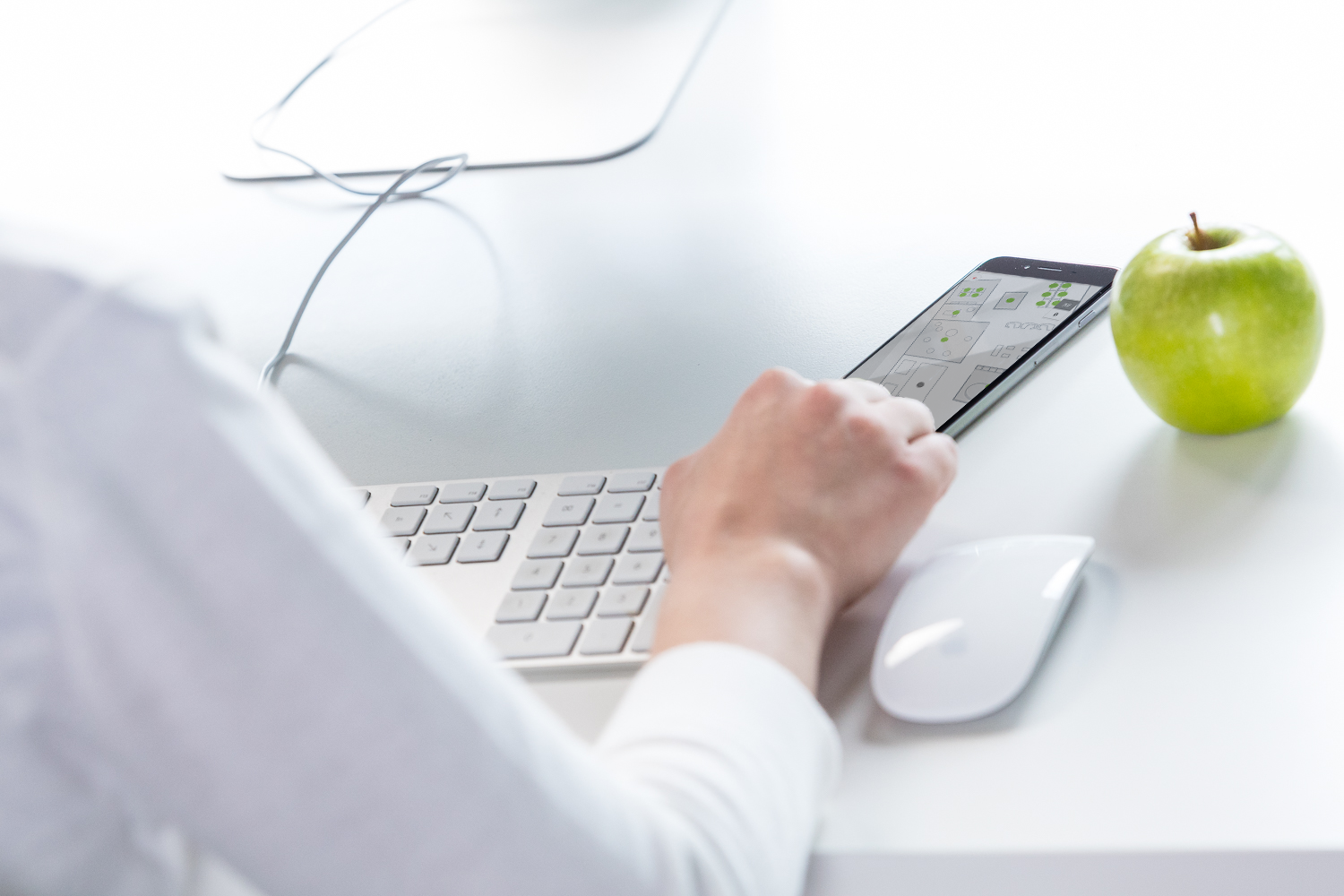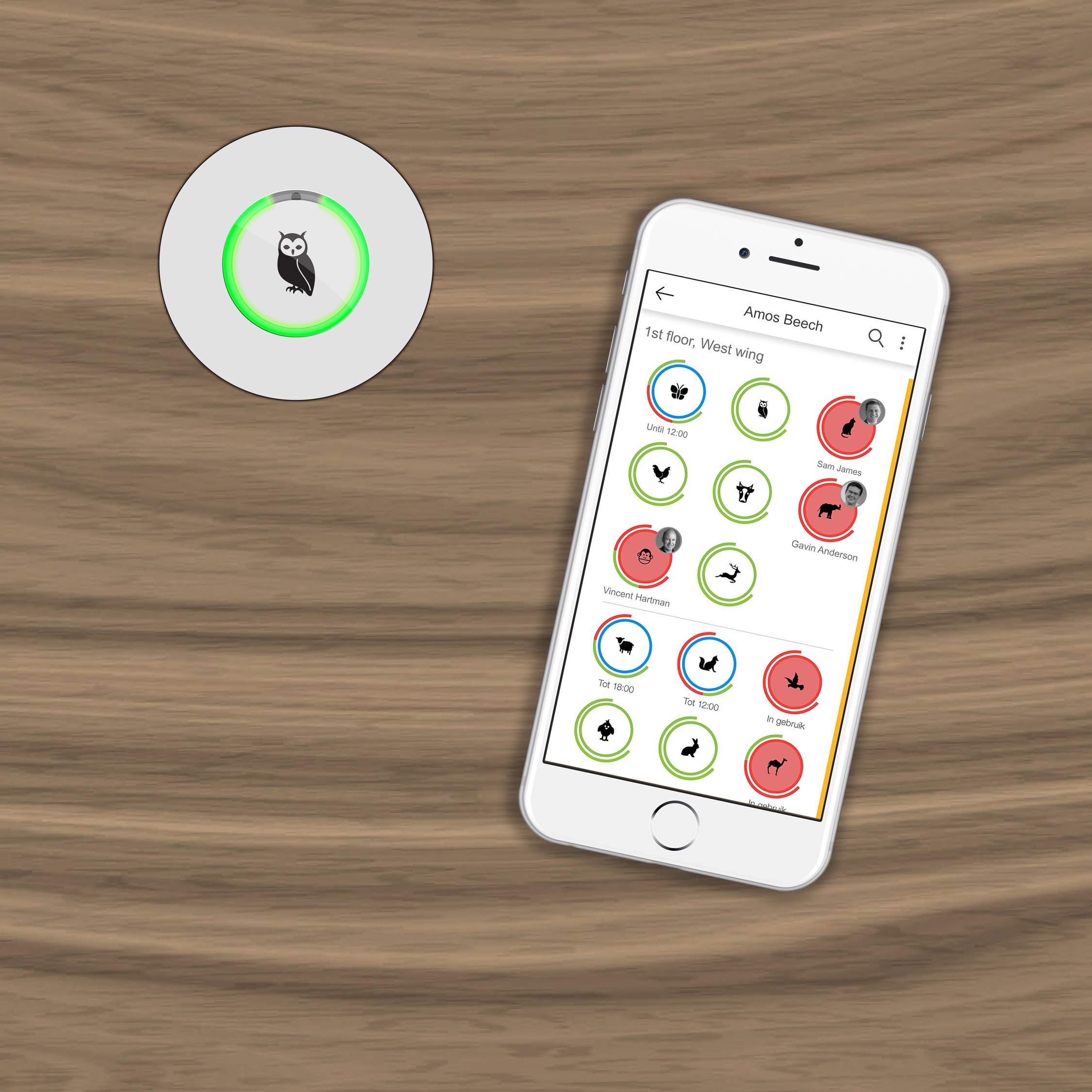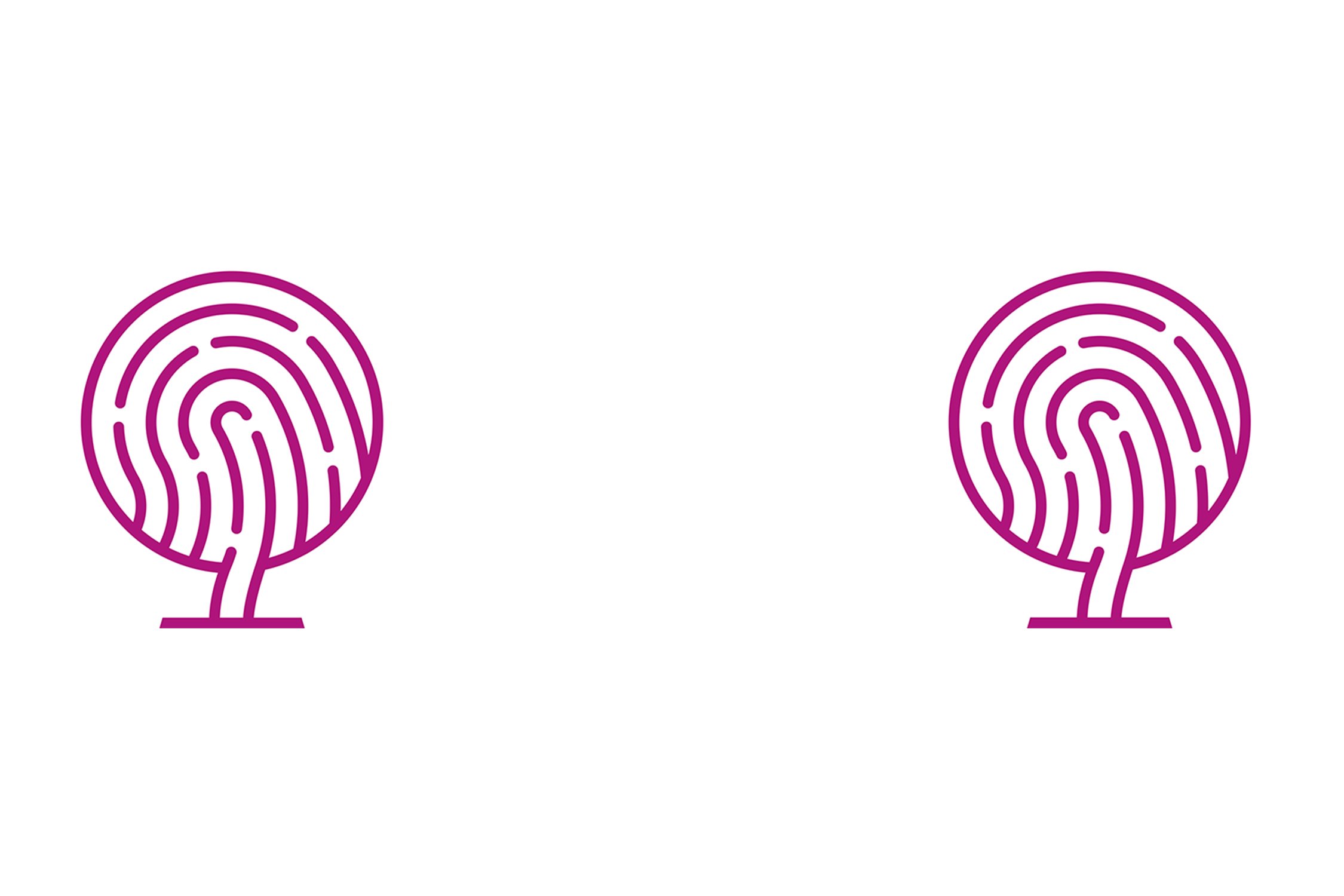Wellbeing, Wellness & Workplace
The blog below was written way before the current Covid19 crisis. It is not that the information is not valuable anymore, but if you require advice for the current (May 2020) situation, we would advice you to check the folowing:
Wellness is now BIG business! It moves you one step closer to a new, and better you - a you that drinks green juices and rids your body of all lingering toxins, a you that enrolls into spin classes before 6 am and has more energy as a result, a you that plugs into head space every evening to calm the mind before your 8 hours of sleep.
For the past month at Amos Beech, wellness has been at the forefront within the office. By being provided with a conscious checklist, we've become more self-aware of our actions and routines within our lifestyle and how it affects us in the workplace.
Wellbeing & Wellness in the Workplace
Here are a few insights and examples that you can try to integrate into your workplace to get the Work/Life balance back on track:
Outside, Inside
Since our blog about Biophilia within the workplace, in 2017. We've all seen workplaces flourishing everywhere. But how about having greenery with a purpose? At Takahashi Hiroko, based in a former factory in Tokyo, redesigned by schemata includes an indoor garden with edible plants.
Fresh Foods
With your office-grown ingredients to hand, having healthy food options will fuel your employees and keep their cravings for sweet and fatty foods away. Even as simple as sharing good food at a decent table will work wonders for your firms' staff morale and community feel.
Workout While Working
Many Japanese corporations understood early on the importance of exercise for their employees. It grew out of their philosophy of kaizen, or “continual improvement.” They appreciated that a workout could make their employees healthier and more productive, therefore began to schedule exercise programs during work hours.
We suggest dedicating a bit of space to being 'multi-use' area, where a variety of exercise classes and wellness workshops could take place. Consider offering something different from the standard yoga, perhaps something that also encourages teamwork. But if space is limited, try getting your employer to take a step in the right direction by contributing towards a gym membership or cycle to work scheme.
Personalised Technology
In other news, Scotland's first development has been accredited with a Platinum WiredScore Certification at 177 Bothwell Street, Glasgow, to assure future occupiers with the best connectivity. We've seen more products beginning to appear that allow employees control over their surroundings, but also products that understand and adapt to the needs of the employees throughout the day.
Philips has installed a system of LED lights in an office in Prague that fluctuate to the circadian rhythms of employees from morning through to night. This ideal is reminiscent of the Endless House, a conceptual work of architecture by Frederick Kiesler in 1924; “endless like the human body—there is no beginning and no end to it.” In the future, we will see smart buildings understanding the needs and wants of the inhabitants and adapting seamlessly.
Healthy Workstations
Until that point, we've seen a rise in technology being incorporated into furniture items keeping employees staying connected with air-charging and USB points. These small details make life just that little bit easier on the most stressful of days. Even by giving employees a choice with their desking, implementing sit-stand desking is more comfortable and healthier for the body.
Art for All
The Sculptor Nick Hornby past artist-in-residence was in an unlikely location - the London headquarters of law firm Pinsent Masons. He brought lawyers to his studio and curated his artwork around the office.
The art can play a part in the culture of the workplace, representing a set of shared attitudes, values, goals and practices. As well as being thought-provoking and sparking discussions with other staff members.
A Daily Pause
In Kiev, the Grammarly Office has a dedicated nap room that includes three sleeping blocks, with a weight sensor under the mattress that sends a signal to light with the indication of zZZ letters outside. The power of sleep and quiet reflection is becoming more commonly recognised as valuable, great opportunity to allow your mind and body to relax.
Happy Holidays
And we all know that a holiday is the best occasion to really relax and rebalance oneself. How about providing your employees with a 'wellbeing day' or have their birthday off on top of the standard holiday allowance to show your appreciation. Or go the extra mile, like FormRoom they are proud to offer a one month (fully paid) sabbatical for every 3 years your stay with their team. They reiterate the value of 'Let the company you work for, lift you up and push you forward; not drag you down or hold you back.'
Do you want to read more about how to improve your workplace? Check:
Blog and graphics by: Design Team
Publication date: August 14th, 2019
What Is Activity-Based Working ?
In simple terms, activity-based working or ABW, refers to providing employees with a location choice. This means that employees get to choose a location that is most suitable for them to work from. They do not have a designated workstation, but the workplace has several areas where they can do specific tasks like focusing, socialising, collaborating and learning.
Today’s workplace has been transformed by technologies like laptops and mobile phones. These have made workers more productive by freeing them from their desks. People can work from anywhere due to their ability to access information easily from the cloud.
Business models as we used to know them are also being disrupted today and new approaches geared towards making employees more flexible and productive are needed. Activity-based working is one of these business models that provide workers with options tailored to their needs.
The driving principle behind the activity-based workplace design is that offices should be flexible enough to adapt to the diverse tasks performed by employees. Traditionally, employees were assigned a single workstation. In the activity-based workplace, employees can move around depending on the task at hand. The flexibility is built into the company’s physical office through its culture, spaceplan, workspaces and furniture.
For example, an employee can start her morning with a brainstorming session at the coffee bar, then move to a conference room for a client meeting and then move to a more private workstation to make calls and work tasks that require extra focus.
ABW @ MRI Software in Newcastle
In this case, she has no fixed desk and can move around freely to the area that provides the best environment for the activity she is handling. All she needs is her mobile phone, a laptop, and a company network.
What exactly does activity-based working bring to the table for both the company and the employees? Let’s see!
6 Undeniable Benefits of Activity-Based Working
Improves Collaboration and Communication
In an ABW environment, employees from different departments can easily collaborate on tasks and projects. This increases productivity and output since they are no longer tied to a desk all day.
Team members can seamlessly move around the workspace. In turn, this leads to better communication, easy sharing of ideas and more. This is the perfect setting for innovative ideas to be born.
Attracts and Retains Good Talent
Adopting a dynamic workplace helps engage staff, stakeholders, and visitors. You can attract the best talent by providing them with something that others don’t – unparalleled flexibility and freedom. Existing employees are also likely to stay if their workspace meets all their needs both personally and professionally.
Boosts Concentration
An activity-based office has workspaces designed for specific tasks. These can include focus group areas, collaborative zones, and quiet places.
Such spaces allow employees to be alone when they need to and to sit comfortably with their colleagues when team work matters the most. Everyone works differently. Some thrive in large crowds, others need to be alone to get their best work done. This is what activity-based working is all about.
Increases Productivity
Traditional offices have been designed for desk work and meetings only. But an activity-based workspace will allow employees to choose how they work, when and where. This recognition of the difference that makes every employee important empowers them to be responsible for their work and decide where they want to work from and when.
Builds Trust
Employees get a sense of ownership, which makes them build trust in the organisation and vice versa. This ultimately leads to company and brand loyalty.
Boosts Flexibility and Sustainability
Letting your employees choose where and when they work can help them balance their personal and work lives, which, in turn, can improve the overall employee wellbeing.
Activity-based working is the sustainable way to grow. Since it’s better at using office space than the working styles, it will help you save a lot of money on real estate. Plus, it reduces the company’s carbon footprint through cutting down on energy and supplies in the office.
Activity-based working also gives you the flexibility to incorporate custom office furniture. Get an interior design expert to recommend the right furniture to support your new working environment.
Activity based workplace design at MRI Software Newcastle
Before you dismiss it as “a new trend that will never catch on”, let us tell you that activity-based working has been around for some time now. And it’s not going anywhere.
A lot of research has been done on this topic. It all proves that it has unlimited benefits for employers and employees alike.
Of course, activity-based working is not without its challenges. They have also been exhaustively researched and documented. Read on to find out how to overcome them.
But first, let’s take a look at some of the most prominent studies.
Research on Activity-Based Working
In a survey of 400 multinational companies, two-thirds of them were open to implementing the shared desk workplace by the year 2020.
Before jumping to it, a lot of companies wanted to learn their employees’ take on the matter.
A recently published study tried to find out if 1000 Australian employees were okay with shared desk environments. Some of the challenges highlighted by the surveyed employees include distractions, increased distrust, negative relationships, uncooperative behavior, and a perceived distrust of supervisors in terms of support.
Another report on hot desking, which shares the activity-based workspace principle, identified challenges like indifference, marginalisation of employees, loss of identity, decreased commitment from organisations, and inattention to co-workers.
However, let’s take a look at the broader picture.
The activity-based workspace design provides different work settings for various activities like private work, meetings, collaborations, creativity, and concentration. The employees are, therefore, expected to make switches between the settings when necessary.
When asked how they feel about a new concept, most people shy away at first. This is why it’s important to test out an office setting before committing to it. Or, better yet, to make the change gradually.
Companies like Facebook and Google are at the forefront of innovation in this field. They adopted activity-based working “before it was cool” and never looked back.
Why?
Well, the reasons are numerous.
To begin with, in hot desking, employees share desks or find one when they need it. This caters well especially to employees who work outside the office often. Another plus side of using hot desking is that there are hot-desking apps available to help in the booking of space before arriving at the office.
In today's smart offices, hot desking applications such as the app marketed by iOt Space now enables employees to choose and book their desks in advance. This app helps avoid the confusion that could arise in case two people want to sit at the same desk. The apps help one find an available desk and they also navigate you to the desk with no delay, especially if you are visiting the office from out of town.
Office layout showing workspace occupancy
This way, some of the challenges that the studies above found are simply non-existent.
Positive research, however, has shown that employees who have self-contained work processes and who view themselves as independent and mobile thrive in activity-based work environments. They can therefore easily choose a workstation based on their preferences or needs. Another positive is that they can avoid social interaction when they need a quiet space to work from.
Its supporters say that the main reason companies implement activity-based working environments is to attract and retain talent. They also wish to take care of their employees’ sustainability and wellbeing while increasing innovation and collaboration.
Based on the various research findings discussed above, we can conclude that there is no one size fits all solution. ABW and hot desking will increase collaboration, efficiency, and communication but it will come with its own challenges.
Of course, any challenge can be surmounted. Since every company is unique and has unique needs, you shouldn’t necessarily base your decision on research done on other companies.
You can use such reports as a way to get started. Afterwards, you should consider your own circumstances.
Factors You Should Consider Before Implement Activity Based Working
Think about it this way: the way people work changes throughout their life. It’s only natural that they can accommodate (and even expect) an evolution of their working environment.
During the school years, everyone knew a certain space was dedicated for a certain activity. There was no in-between. For example, the music room for music, the gym for sports and the laboratory for science.
When they got into a university, they had the choice to either get the group work done under a tree, at the café, or in the library. A traditional workspace may therefore not work for them. Organisations have no choice but to embrace these new ways of working if they want to retain and attract new talent.
Before making the change, however, employers have to consider some important factors including:
What Are the Reasons for the Change?
Why do you want to implement activity-based working? Are you doing it because everyone else is? Do you feel like your peeps could benefit from more interaction?
Activity-based working encourages collaboration and therefore your business can easily pull a team from different departments in your organization to work on a project if everyone is mobile. Employees are different, and this difference is what makes activity-based working a good model.
Those who require isolation can work at their own stations while those who thrive in a noisy work environment can also do their thing. It encourages responsibility. More importantly, employees are treated as adults who can choose an environment that makes them productive.
Before making the decision, consider your employees. Ask them how they feel about it.
Make Sure Your C-Suite Supports the Move
If they do, then they will offer you support and advocate for the chance by leading by example. Otherwise, everything may be doomed from the start.
If your employees see that C-level execs never step foot in the common workspace, they will feel discriminated and treated as less important.
Of course, we all know that C-level execs need privacy. But they also need to be among their team every once in a while, don’t they?
Choose the Best Model for Your Team
As previously mentioned, there is no one size fits all when it comes to designing your office. Do a thorough research on the different models available and then choose one that suits your organisation’s needs. Obiously you can ask the workplace consultants here at Amos Beech for help.
Take Change Management Seriously
As you invest in this move, make sure your employees are educated on why the move is necessary, the benefits of the move, what will be changing, and why this particular model has been chosen. Use an effective communication plan that will involve different mediums and engage employees at all the levels of the organisation.
Test Drive before Purchasing
Test whether the change will be effective using a pilot workspace. This is an effective change tool because, from it, you can tell whether the move will benefit the company or not.
The pilot will also be a learning phase that will help you tailor a suitable working model as per your needs. Plus, it will help the employees warm up to the new way of doing things and how it will eventually affect them.
Don’t Be Discouraged by Negativity
Change is hard and some of your employees will not be thrilled by it. Learn from them but do not let them bring you down.
Recruit the Right People and Rid the Company of Paper
Activity-based working can enable you to manage all your records electronically. This will reduce your carbon footprint and turn you into a more desirable employer and business partner for your clients.
Also, make sure you recruit leaders with skills and expertise in activity-based working so they can help other employees easily adapt to the new move. Safeguard your investment by choosing the right people to handle it.
Final Thoughts
According to a case study by UK’s HR Magazine on Atlas Copco’s introduction of activity-based working at their UK office, the exercise proved to be successful.
The company implemented a cockpit for individuals needing privacy, a larger cabin that allowed for small groups to work together, and an open space furnished with multiple desks. This gave them a digital workspace that can be reconfigured whenever the needs of an employee change. The employees are now more connected and engaged since their working conditions have changed for the better.
Activity-based working benefits may not be felt immediately, but they are broader and long-term. And if they are properly executed, they can foster the wellness of the employees by improving their mental, physical, and social wellbeing.
Got 4 minutes?
Go and watch a really great video! Veldhoen + Company have created a great animation about what Activity Based Working is and what it isn't:
Most important takeaway:
"Whats really needed is a workplace tailored to the actual needs of people.”
Hybrid Working: What Is it and Why Are Employees Demanding it?
Prior to March 2020, we had two major types of companies: office-first and remote-first. The first category expected employees to work from the office for most of the time, while the second type expected them to work anywhere else for most of the time. Today, things aren’t black and white anymore and concepts like hybrid working seem to be here to stay.
If you’re a regular on the Amos Beech blog, you know that we’ve already covered agile working or flexible working in the past. Back then, these concepts seemed a bit trendy, if not revolutionary per se. While the number of companies that allowed their employees to work away from the office for at least some time was increasing, no one could have foreseen the hyper-growth in remote working that the pandemic spurred.
After more than a year since the pandemic sent us all working from home, it seems that there is no consensus about the best alternative – remote or non-remote. So we have something that makes everyone happy: hybrid working.
Let’s discover what this (relatively) new kid on the block is and what to expect from it.
But first, a primer on how the past year has influenced our views on working outside of the office.
Back to the Office: Yay or Nay?
In a recent survey, more than 57% of respondents stated that they would like to continue to work from home when the pandemic is over. It looks like their wish may be granted: before the crisis, a mere 15% of employers said that more than half their workforce worked from home regularly. After the crisis, 40% of employers said they expect more than half their workforce to work regularly from home.
Companies pivoted to the new working conditions incredibly fast: 87% of employees report that their companies have adapted to hybrid working. The same report has uncovered more interesting facts:
65% of employees say that their employers have provided them with everything they need to work from home.
More than half of the surveyed employees say that they have been able to use their lunch break for personal reasons and that they have an improvement in their happiness levels since working from home.
However, 30% of employees feel that they are working more hours since transitioning to working from home, while 53% of them feel pressured to be available at all times.
Consequently, more than a third of the employees surveyed opted for mental health and resilience resources when they had to choose between various training and learning opportunities.
Unsurprisingly, socialising is what most respondents (65%) miss about working in an office.
There is obviously no one-size-fits-all here. And you can easily depict that from the most popular media titles on this topic:
But on the other hand you’ve got:
What do you do when there’s no consensus one way or the other?
You go hybrid, of course.
What Is Hybrid Working?
Hybrid working is a model that offers employees flexibility and where and when they work. It enables them to work from the office, from home, or from any location – even locations outside of the city or the country where the employer’s offices are.
There are not set parametres for hybrid working. Here are some options on how to adapt this working style to your needs:
Work from the office full-time in some days and remotely in others.
Have some departments come in to the office every day, while others work 100% remotely.
All employees can work from the office for part of the week and remotely for the other part. You can rotate which departments work remotely Mondays through Wednesdays, for instance, or you can call them all in at the same time.
Have all your employees work remotely, save for one day a week or a month when they come into the office for an all-hands meeting.
Make it entirely the employees’ choice. You can still have an office where people can choose to come in whenever they want to. Solutions like iOt Space can help them find free desks or conference room, schedule activities, and make the transition easier altogether.
In hybrid working, the world is your oyster. You can choose any of the options above or create your own variation by combining two or more.
One of the main selling points of hybrid working refers to the fact that it can be future-proof. The COVID-19 pandemic has taught us that a lot of companies in a lot of industries can survive and even thrive with a 100% remote workforce, even when the transition to remote working was done hastily and with little time for preparations.
People adapted, pivoted, managed. Now that we’ve had more than a year to perfect our systems and our routines, things can get even better.
Plus, with the world gradually re-opening, workers aren’t confined within the same four walls of their home. They can work from their favorite café, from a nearby park, or, why not, from an island in the Mediterranean.
If everything can be set just as you want it to, what’s stopping some companies from embracing hybrid working without reserves? And why isn’t everyone in the workforce flocking to this model?
Let’s find out!
One of the latest studies:
Pros and Cons of Hybrid Working
These are some of the things that hybrid working can undoubtedly bring to the table:
No more time and money wasted on commuting: this is a big plus! The average worker in the UK used to spend 1 hour 38 minutes on commuting alone, not to mention the time it takes to get ready to leave and then to decompress once you get home. This time can be spent with your family, on your hobbies, or, why not, on getting up later and then being more productive throughout the day because you got to sleep in.
Better for the environment: during the lockdowns, the carbon emissions dropped so much that we almost met the conditions of the Paris agreement. If fewer people would rush to work every day at the same time, we could make a dent in the environmental disaster that most scientists are warning us about.
Less money spent on office lunches: it’s undoubtedly more affordable to eat at home. Plus, you have access to healthier options and, given the point above, more time to go shopping for those healthier alternatives.
Better office spaces: at Amos Beech, we’ve been working on a lot of fit out and refurbishment projects in the past year. We’ve seen Scottish companies pivot from crammed office spaces with rows of impersonal desks to more homely designs, with collaborative spaces, lounge chairs, outdoor spaces, and more indoor plants. All in all, the employees get a more homely feeling when they are in office and they get to be more productive in a space that’s more “humanized”.
Less money spent on corporate real estate: when you make the shift to hybrid working, you don’t need to cram all your workforce in the same space at the same time every day. So you can rent a smaller space and use the rest of your rent on refurbishing, moving to a better office building, or simply investing in your company’s growth.
Less employee turnover: with more than half of the workforce demanding hybrid working, you can be sure that your employees will switch companies if you don’t offer them this option. 47% of employees are ready to take this step when not offered hybrid working options. If, on the other hand, you do offer it, they will stay loyal to you.
Reduce exposure to illness: we all expect the pandemic to pass…eventually. But this doesn’t mean that office spaces can’t expose you to other airborne viruses. Remember the classic flu? It might be back with a vengeance!
Hire talent from across the globe…or, at least, the country. If physical presence in the office is no longer a pre-requisite, you’ll have access to a much larger talent pool.
What’s stopping employees and employers from fully embracing hybrid working then? Well, a few things:
Less socialising: Aristotle said man is a zoon politikon – a social animal. We need social interaction to thrive and to be productive. The occasional water cooler meeting of a co-worker typically provides us with unexpected creative bursts that can last throughout the day. When we no longer have that, we miss it so much that our mental health is impacted. Granted, if we are able to leave our home, we could interact with other workers we meet in cafes, but it could still take some adjustment.
Management challenges: it’s hard for managers to keep their teams motivated. Due to our ‘social animal’ quality, an in-person praise from a manager always weighs more than the same praise delivered via email. Another hurdle for managers is building effective teams when their members have yet to meet in person.
Discrimination: within certain companies, some departments (the creative ones, usually) can easily work remotely, since all they need is a laptop. But what happens to the departments that need constant access to bulky hardware and that need that hardware to be shared between team members? QA teams are good example here. They could feel discriminated against, which prompts most managers to forego adopting hybrid work altogether.
Motivation and productivity are harder to come by: the moment you step into the office, your mind knows that you are there to work. That’s what everyone does around you. Of course, there are countless distractions and ways to procrastinate in a classic office, too. But there aren’t nearly as many as you can find at home. Netflix and chill instead of Zoom and Excel? Who could say no to that? Very few people! However, even self-discipline and motivation can be learned, so there is still hope there.
Flexible Working, Agile Working, Hybrid Working – What’s the Difference?
Tired of all the new working styles popping up every year? So are we! It’s sometimes hard to keep track. But, if we’re being honest, the workplace has been changing forever. It’s just easier to notice now.
While flexible working, agile working, and hybrid working have a lot of things in common, it’s the subtle differences that matter.
Flexible working is the oldest of these terms. It usually refers to when an employee is supposed to work. Flexible working arrangements are discussed with the employer beforehand and can refer to part time working, working in shifts, not starting the work day at the usual hour to accommodate students or other social categories, and so on.
Initially, this term was coined for the “traditional” working style, where everyone came to the office. Now, it can be used as complementary to either agile or hybrid working and it can refer to working from home too.
Agile working is a style that borrows from the Agile methodology typically used in project management to offer a new way of working that focuses on deliverables rather than time spent on a certain task or in the office.
Agile working offers employees the possibility to choose where they work from and when they do it, with little or no constraints, as long as the job gets done. Usually, companies that implement agile working will also rely on technology to make the transition seamless. Hot desking (where not every employee has an assigned desk because they aren’t always in the office) is a complementary trend to agile working and one that can be implemented easily with the right technology.
Hybrid working is the lovechild of the two styles above and one of the few good things to come out of the pandemic. There are no set rules in hybrid working and no methodologies you have to adhere to. As something born out of the initial chaos of the pandemic, hybrid working is 100% flexible and adaptable to the needs of every company.
As outlined above, you can choose how you mix and match the countless options for remote and in-office work and how you couple them with flexible hours.
Wrapping Things Up
The beauty of hybrid work is that it appeals to the generations that make up most of the workforce now and in the future: Millennials and Generation Z. Both of them avoid routine as much as possible and cherish freedom above anything else.
Ready to pivot to hybrid working? We can help you create the ideal space for a hybrid working approach. Check out our office fit out service and reach out to our experts!

















































